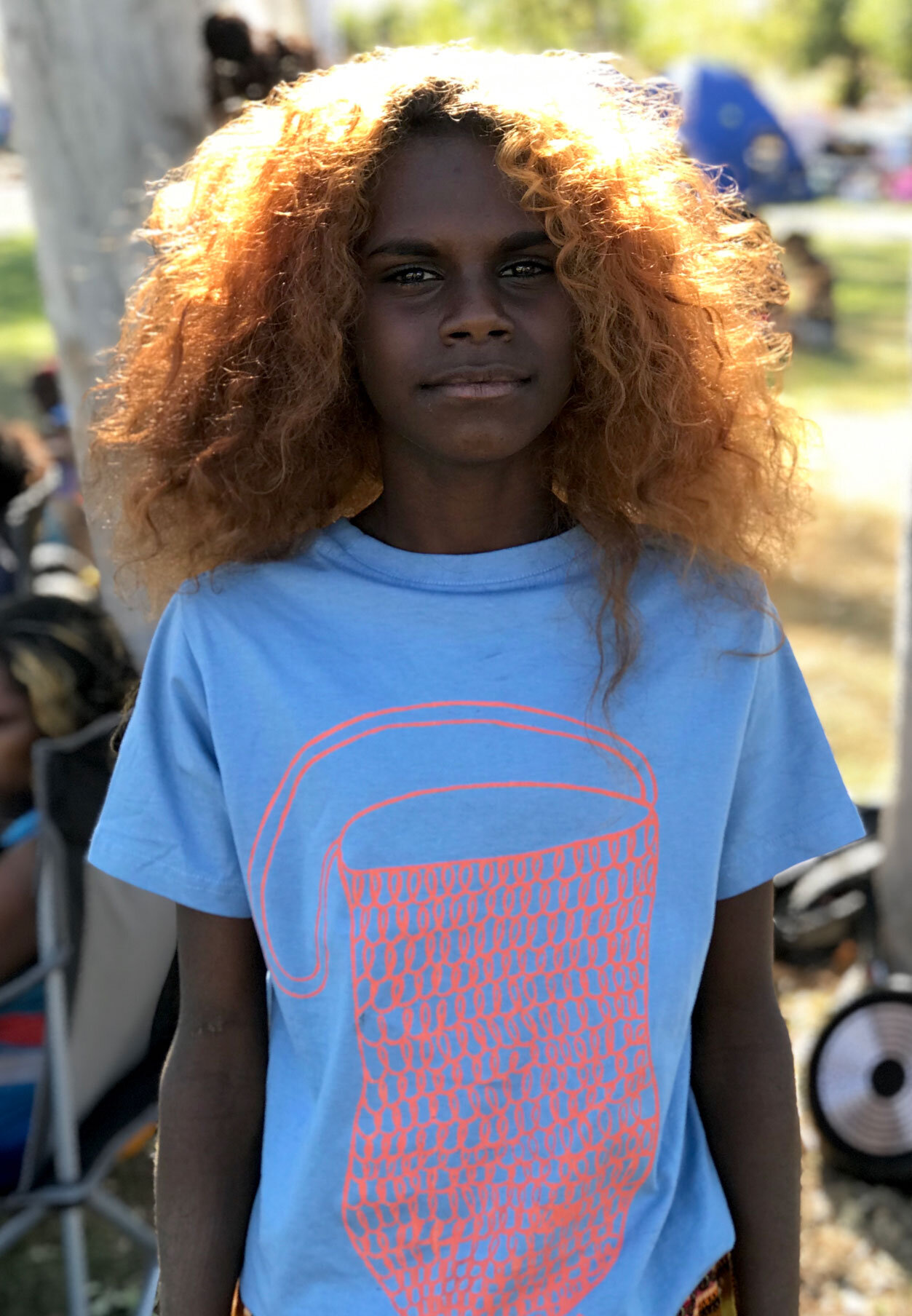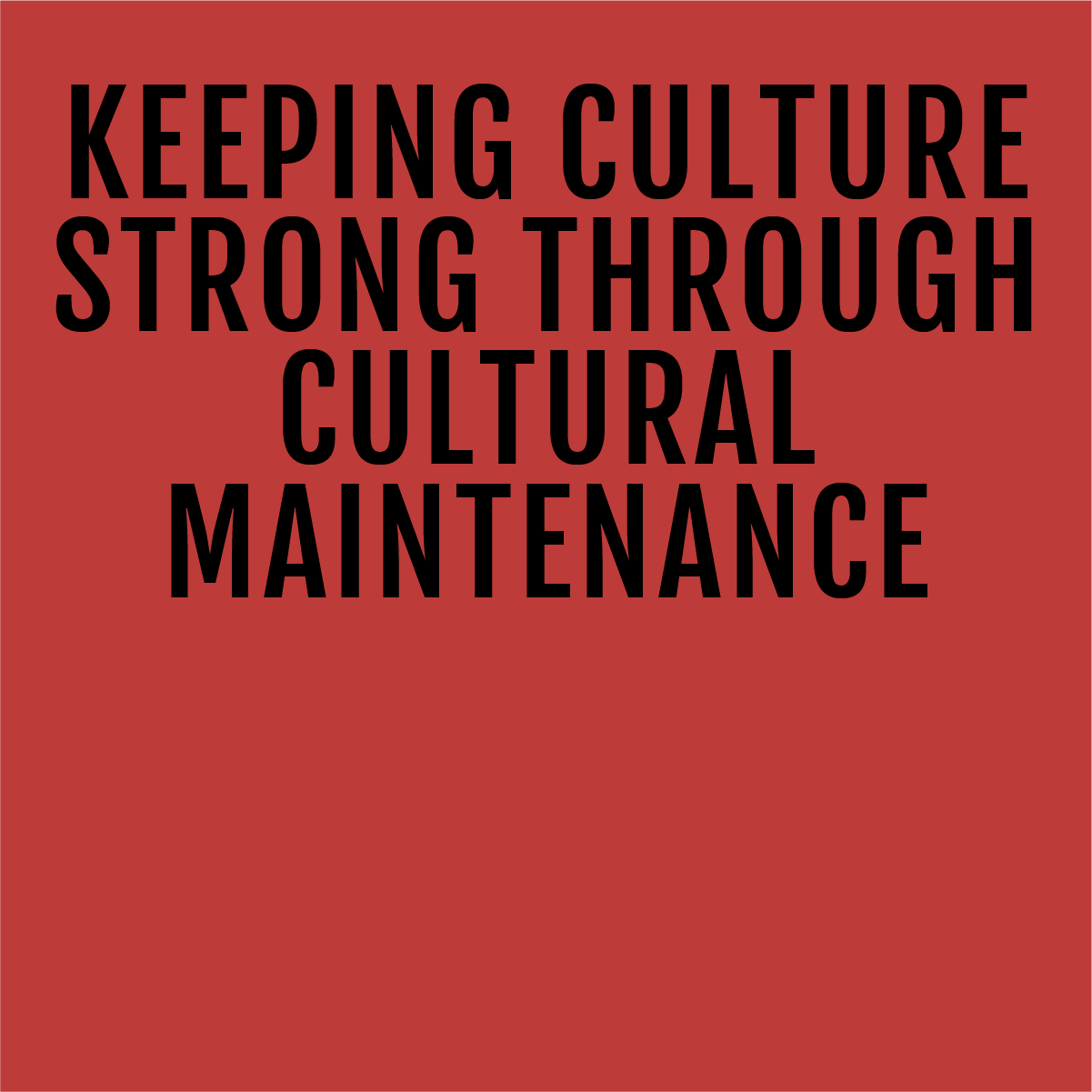MESSAGE STICKS
BY Regina Pilawuk Wilson
Regina won the General Painting category of the Telstra National Indigenous and Torres-Strait Islander Award in 2003 for a golden syaw (fish-net) painting. The cultural significance of ‘message sticks’ are also celebrated in her paintings– a traditional form of communication between communities. This is her story of the message stick (with assistance by Peppimenarti elder Captain Wodij):
When we were young we used to live at Daly River and his mob used to live at Uban, near Timber Creek. There was no road, no anything.
They used to carry message sticks.
They used to come to Daly River from Uban. For weeks they used to travel.
They carried message sticks to remember how many days they travel to that certain place.
It was like first Aboriginal education… just to remember how many days to travel from a certain place to Daly. They used to travel from here to Beswick too.
Even in flood waters.
They used to swim creeks and rivers to get to a place for ceremony. This was before WWII.
They were really young men. I remember they used to come. When the war started they moved back to Uban.
They used to walk long way, no motor car.
They used to join up at Moyle River to fight different clans.
They used to swim in the sea, no boat and less crocodiles.
Also by bringing the message stick they would bring people back with them… they would all walk together, sometimes for one year. Sometimes stay in one place for camp: big mob food, turtle, yam, fish.
They would walk slowly, those old people.
And children too, and babies. They’d have the babies half way. We used to have bush nurses who would cut the cord with a mussel shell. They used to take message stick to boss man of a language group. If Boss says yes, they’d all move.
If a mob went to another country for burning grass, the leader would get angry and a message sticks would follow. Then there would be war.
If a man went off with message stick and didn’t return, they think big trouble. A different clan would go and steal another man’s wife. Message stick is for war and ceremony and things like that.
That message stick means a lot.



















